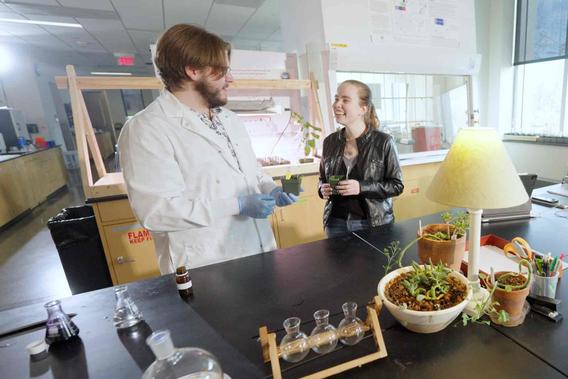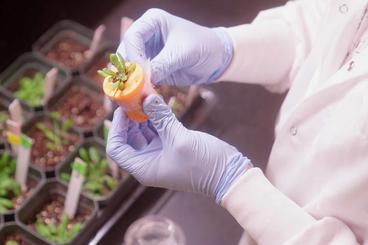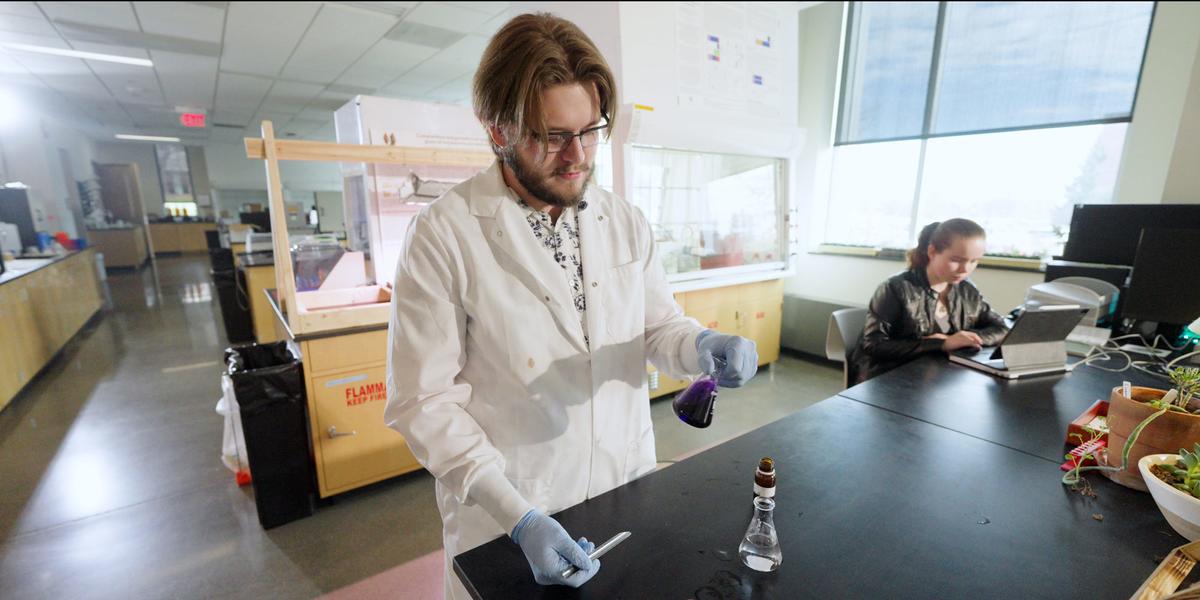
One of the duties for students working in the The Busta Plant Chemistry Lab at the University of Minnesota Duluth (UMD) is “vibes,” AKA setting the mood of the space with decorations and lighting. It’s one of the things Biology Student Rory Westerman appreciates about working as an undergraduate researcher.
But while the vibes in the lab are relaxed, the focus of the research is urgent: How do you remove toxic chemicals like PFAS from the environment?
PFAS, or per- and polyfluoroalkyl substances, are synthetic chemicals used in a variety of commercial products, like nonstick cookware and water-resistant fabric. They’re often referred to as “forever chemicals” because they don’t break down. Instead, they can move through soils, contaminate drinking water sources, and build up (bioaccumulate) in fish and wildlife.
Under the guidance of Luke Busta, an assistant professor of Chemistry in the Swenson College of Science and Engineering, Westerman is trying to find a plant that can absorb PFAS well (hyperaccumulator) and a fungi that can break those chemicals down. If successful, the plants and fungi could deliver a one-two punch to PFAS.

To help illustrate, Westerman says to imagine that the plant was a grass. That grass could be planted in a yard where clippings are collected after mowing and fed to a system where fungi would break down the plant material and PFAS. On a larger scale, he said, the fungi could be used in food waste facilities where fertilizer is generated, preventing PFAS from further circulation.
Westerman is currently testing Arabidopsis thaliana mutants to see if there are specific genes that play a role in PFAS absorption, and looking at a variety of fungi to learn if they have the potential to break down PFAS. The work involves a lot of water testing and tending to plants. After his undergraduate studies, he plans to apply to the Integrated Biosciences Graduate Program at UMD and continue his research. The combination of impactful research and a supportive environment are what Westerman said encouraged him to further his education.
“My experience here has been really great,” he said. “All of the professors have been incredibly nice and supportive, pushing me to excel.”
